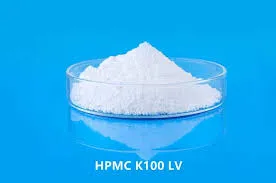
Dec . 07, 2024 04:30 Back to list
hpmc hydroxypropyl methylcellulose
Hydroxypropyl Methylcellulose An Overview
Hydroxypropyl Methylcellulose (HPMC) is a widely utilized cellulose ether that plays a significant role in various industries, particularly in pharmaceuticals, food, cosmetics, and construction. This semi-synthetic polymer is derived from the natural polymer cellulose, which is extracted from plants. The modification of cellulose through the introduction of hydroxypropyl and methyl groups imparts unique properties that make HPMC a versatile and valuable ingredient in many applications.
Hydroxypropyl Methylcellulose An Overview
In addition to its applications in drug formulation, HPMC is a critical ingredient in the food industry. It is utilized as a thickening agent, stabilizer, and emulsifier in various food products. HPMC helps maintain the texture and consistency of foods, such as sauces, dressings, and dairy products, while also enhancing their shelf life by preventing separation and spoilage. Moreover, its ability to retain water makes it an excellent choice for low-fat and gluten-free products, as it helps to mimic the mouthfeel and viscosity of traditional ingredients.
hpmc hydroxypropyl methylcellulose

Another significant application of HPMC is in the construction industry. The compound is incorporated into cement-based materials, such as tile adhesives and plaster, to improve workability and adhesion. HPMC enhances the water retention of these mixtures, allowing for better bonding and reducing the likelihood of cracking during the curing process. Additionally, the viscosity properties of HPMC ensure that these materials can be easily applied and provide a smooth finish.
Cosmetics and personal care products also benefit from the inclusion of HPMC. It is used as a thickener in creams and lotions, providing a desirable texture while also improving the stability and appearance of emulsions. HPMC can also function as a film-former, allowing for the creation of long-lasting makeup products that stay in place throughout the day. Its biocompatibility and non-toxic nature make it a preferred choice for formulators aiming to create safe and effective cosmetic products.
Despite its numerous advantages, the use of HPMC is not without challenges. The sourcing of cellulose, from which HPMC is derived, can raise concerns regarding sustainability and environmental impact. As consumers become more eco-conscious, the demand for biodegradable and sustainably sourced ingredients continues to rise. Therefore, research into the development of HPMC from renewable resources and its potential for biodegradability is critical for the future of its applications.
In conclusion, Hydroxypropyl Methylcellulose is an essential compound that touches various aspects of everyday life. From enhancing the efficiency of medications to improving food textures and facilitating construction projects, its multifaceted properties make it a valuable ingredient in many sectors. Continued innovation in the development and application of HPMC will ensure that it remains a cornerstone in the formulation of various products, while also addressing sustainability concerns that accompany its use. As research progresses, HPMC is likely to evolve further, paving the way for even more efficient and environmentally friendly applications.
-
Versatile Hpmc Uses in Different Industries
NewsJun.19,2025
-
Redispersible Powder's Role in Enhancing Durability of Construction Products
NewsJun.19,2025
-
Hydroxyethyl Cellulose Applications Driving Green Industrial Processes
NewsJun.19,2025
-
Exploring Different Redispersible Polymer Powder
NewsJun.19,2025
-
Choosing the Right Mortar Bonding Agent
NewsJun.19,2025
-
Applications and Significance of China Hpmc in Modern Industries
NewsJun.19,2025







